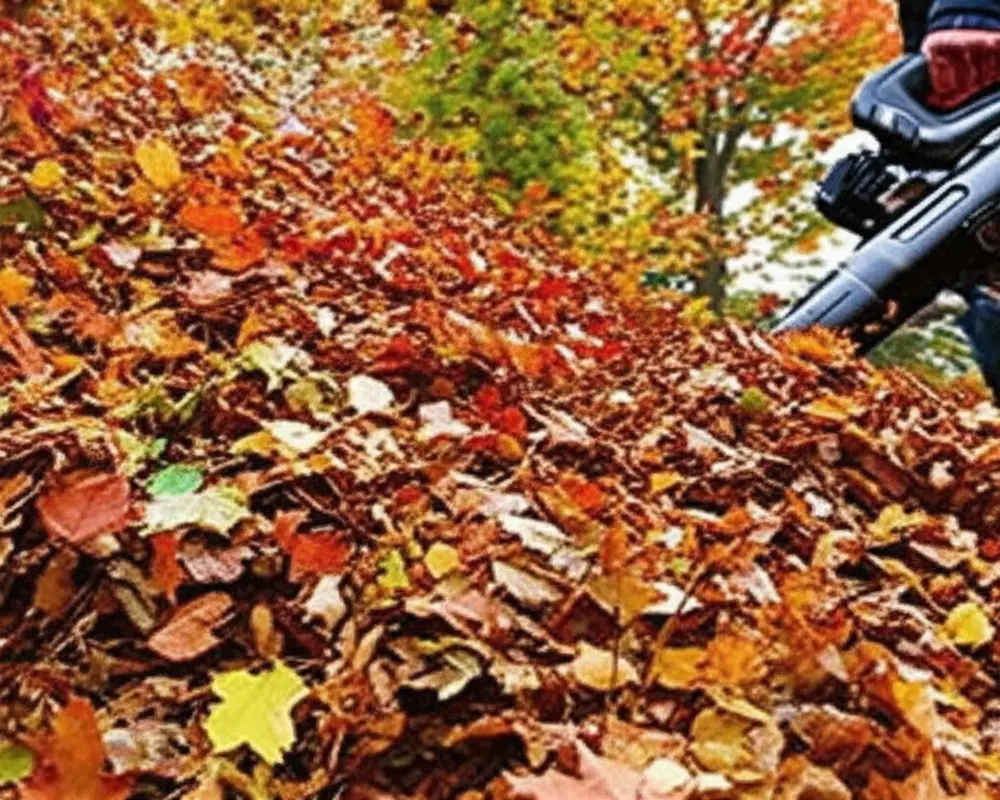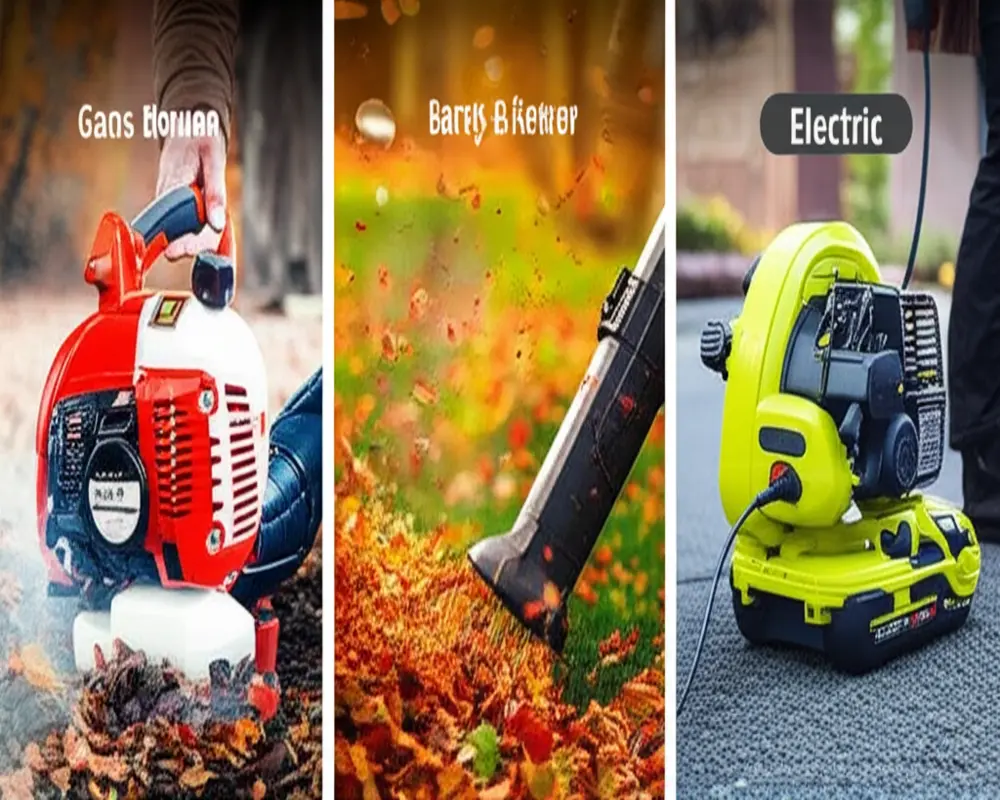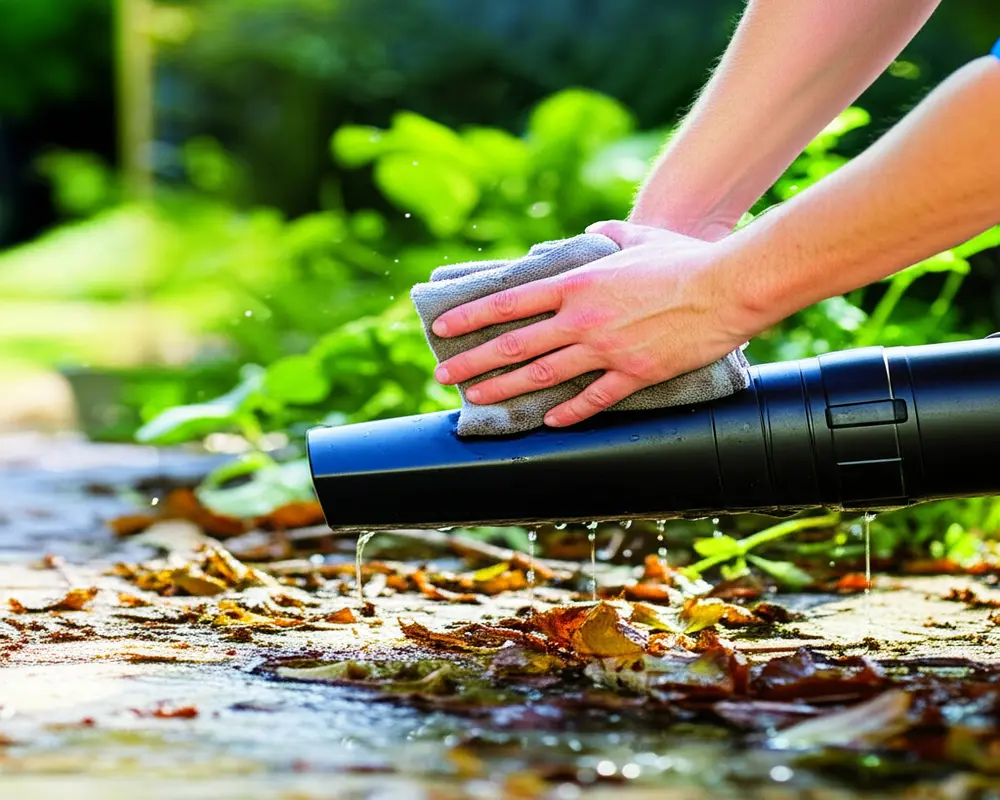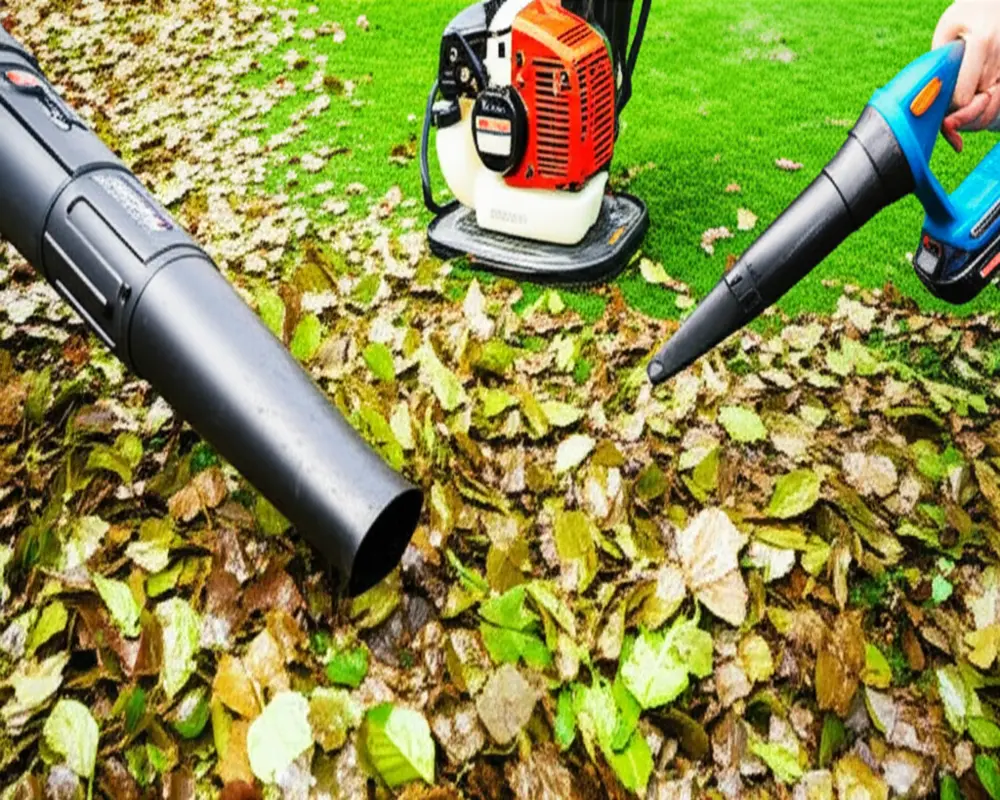Best Leaf Blowers for Wet Leaves: Power Your Wet Leaf Cleanup
Cleaning up wet leaves is a task that challenges many homeowners and landscapers alike. Unlike dry leaves, wet leaves are heavier, sticky, and tend to clump together, making them difficult to move with a typical leaf blower. If you've ever struggled with your current blower's inability to handle damp, matted debris effectively, you're not alone. Many standard blowers simply lack the power and airflow volume needed to dislodge and transport these stubborn leaves.
To efficiently clear wet leaf debris, you need a blower equipped with specialized features that deliver higher air volume and speed. This guide explores the essential qualities to look for in a leaf blower for wet leaves, types of blowers suited for the task, and top-rated models for 2025. Whether you have a small yard or a sprawling lawn, understanding these factors will empower you to choose the right tool for effective wet leaf cleanup.
Understanding What Makes a Leaf Blower Effective for Wet Leaves
Not all leaf blowers are created equal when it comes to handling wet, heavy leaves. To select a blower that excels in wet conditions, it's critical to understand the key performance metrics and design features that influence its effectiveness.
The Power Duo: CFM & MPH
The two fundamental measurements that determine a leaf blower’s capability are CFM (Cubic Feet per Minute) and MPH (Miles Per Hour). CFM represents the volume of air the blower moves. For wet leaves, which are heavier and tend to stick together, a high CFM is vital to generate enough airflow to lift and push the debris. Meanwhile, MPH measures the speed of the air blast, which is crucial to break the adhesion of wet, matted leaves from surfaces.
When combined, high CFM and high MPH provide a synergistic effect—high air volume lifts large quantities of leaves, while the strong air speed dislodges stubborn, sticky leaves. For example, a blower delivering 400 CFM at 180 MPH will outperform one with 300 CFM at 130 MPH in wet leaf scenarios.

Nozzle Types & Their Impact
The nozzle design influences how air is directed onto the leaves. Flat nozzles concentrate the airflow into a narrow, forceful stream, allowing for precision and greater impact force on dense, wet leaf piles. This design makes them ideal for targeted removal of matted leaves.
Round nozzles disperse air over a wider area, suitable for lighter, scattered leaves but less effective on heavy wet debris. Some blowers come with interchangeable attachments, including extension tubes or specialized vortex nozzles, which can enhance performance depending on the cleanup task.
Engine/Motor Power & Durability
The heart of a leaf blower is its engine or motor. For wet leaves, strong and durable engines are necessary to sustain high output without overheating or stalling. Gas-powered blowers typically provide the highest power and endurance, but quality electric motors have made significant advancements, especially in battery-powered models.
Durability also matters—blowers with robust construction and materials resist wear from abrasive debris and moisture exposure, extending their lifespan and maintaining performance.
Weight, Ergonomics & Vibration Control
Handling wet leaf cleanup often requires extended use, so comfort is key. Lightweight blowers reduce fatigue, while ergonomic handles and anti-vibration systems improve control and user experience. Backpack models distribute weight evenly, which can be especially beneficial for large areas or prolonged tasks.
Types of Leaf Blowers: Which is Best for Wet Conditions?
Choosing the right type of blower depends on your yard size, frequency of use, and personal preferences. Each type has unique advantages and limitations for handling wet leaves.

Gas-Powered Leaf Blowers
Gas-powered blowers are renowned for their high power output and cordless freedom, making them the top choice for clearing heavy, wet leaves in large yards. They produce robust air volume and speed, capable of tackling matted debris with ease. However, they tend to be heavier, noisier, emit fumes, and require regular maintenance such as fueling and spark plug checks.
This type is best suited for users who prioritize power and have extensive areas to maintain, accepting the trade-offs of weight and upkeep.
Battery-Powered Leaf Blowers
Battery-powered models have advanced significantly, offering quieter operation, zero emissions, and lower maintenance. Many can now deliver high CFM and MPH ratings that rival gas blowers, making them a practical option for medium to large yards. The main limitation is battery runtime at peak power, which can range from 20 to 60 minutes depending on the model and battery capacity.
They’re ideal for homeowners seeking a balance between power and convenience without the hassle of fuel or cords.
Corded Electric Leaf Blowers
Corded electric blowers are lightweight, provide unlimited runtime, and start instantly. However, their power is generally lower than gas or high-end battery models, and the cord limits mobility. They perform best in smaller yards with lighter wet leaf loads.
Backpack vs. Handheld
Backpack blowers distribute weight across the user’s back and shoulders, reducing arm fatigue and allowing for longer use. They commonly feature more powerful engines, making them suitable for large properties and heavy wet leaf clearing. Handheld blowers offer greater maneuverability and are better for small to medium yards or spot cleaning.
Best Leaf Blowers for Wet Leaves: Top Picks & Reviews [2025]
After thorough research and testing, here are the top leaf blowers for wet leaves in 2025, selected for power, durability, ergonomics, and value.
Overall Best Leaf Blower for Wet Leaves
Model: Stihl BR 800 C-E
Specs: 912 CFM, 244 MPH, 20.9 lbs
Pros: Exceptional power, durable construction, easy start, excellent for large wet leaf piles.
Cons: Higher price, heavier weight.
Recommended for users with extensive yards who need reliable, industrial-strength wet leaf clearing.
Best Gas Leaf Blower for Heavy Wet Leaves
Model: Husqvarna 580BTS
Specs: 530 CFM, 210 MPH, 23.1 lbs
Pros: Strong air volume and speed, backpack design for comfort, robust engine.
Cons: Loud, requires maintenance.
Ideal for professionals and homeowners with large landscapes.
Best Battery-Powered Leaf Blower
Model: EGO Power+ LB7654
Specs: 750 CFM, 200 MPH, 9.7 lbs
Pros: Cordless freedom, quiet operation, powerful airflow, long battery life.
Cons: Battery cost, limited runtime at max power.
Best for environmentally conscious users wanting strong performance with low noise.
Best Backpack Leaf Blower
Model: Echo PB-9010
Specs: 780 CFM, 205 MPH, 23 lbs
Pros: High power, ergonomic harness, durable.
Cons: Pricey and heavier.
Suitable for heavy-duty, long-duration wet leaf cleanup.
Best Budget-Friendly Option
Model: Greenworks 24012
Specs: 210 CFM, 130 MPH, 7.5 lbs
Pros: Affordable, lightweight, easy to use.
Cons: Lower power, limited wet leaf capacity.
Great for small yards or occasional wet leaf cleanup on a budget.
Best for Small Yards / Occasional Wet Leaves
Model: Black+Decker LB700
Specs: 180 CFM, 125 MPH, 5.5 lbs
Pros: Compact, corded for unlimited runtime, easy handling.
Cons: Power insufficient for heavy wet leaves.
Perfect for small properties with less frequent wet leaf tasks.
How We Chose & Tested the Best Leaf Blowers for Wet Leaves
Our selection process started with extensive research on leading brands and specifications relevant to wet leaf challenges. We prioritized models offering high CFM and MPH figures, robust engine/motor durability, and ergonomic features. Expert reviews and user testimonials focusing on wet leaf performance were analyzed to gauge real-world effectiveness.
Whenever possible, hands-on testing was conducted, simulating typical wet leaf cleanup conditions. We evaluated blower power, ease of use, comfort during extended operation, and maintenance needs. Objectivity was maintained by comparing models across different yard sizes and user needs, emphasizing performance over marketing claims.
Advanced Wet Leaf Cleanup Strategies & Techniques
Beyond choosing the right blower, adopting effective techniques can make wet leaf removal faster and less strenuous.
Timing is crucial—try to blow wet leaves during mid-morning hours when the sun has had time to dry some moisture but the leaves are not yet brittle. Dividing large yards into manageable sections helps maintain control and avoids spreading leaves around.
Use the wind direction to your advantage, blowing leaves downwind to prevent them from scattering back. For matted leaves, employ a sweeping motion with the blower nozzle to loosen clusters gradually.
Incorporating rakes or tarps alongside the blower can aid in gathering and disposing of wet leaves efficiently. Safety is paramount—wear protective eyewear and gloves, watch out for obstacles, and handle fuel or batteries safely.
Maintenance Tips for Your Leaf Blower During Wet Leaf Season

Proper maintenance extends your blower’s life and ensures consistent performance, especially when used on wet leaves.
After each use, clean wet debris from air intakes and nozzles to prevent clogging. Inspect and clear any blockages promptly. For gas blowers, regularly check the spark plug, air filter, and fuel quality. For battery models, follow manufacturer guidelines for charging and storage to maintain battery health.
When the wet leaf season ends, prepare your blower for winter storage by draining fuel (gas models), cleaning thoroughly, and storing in a dry, sheltered location.
Frequently Asked Questions About Blowing Wet Leaves
- Can any blower handle wet leaves?
- No, standard blowers often lack the power and airflow volume needed to move heavy, matted wet leaves effectively.
- Is higher CFM or MPH more important?
- Both are important; high CFM provides the volume to lift leaves, while high MPH delivers the airspeed to dislodge sticky debris. Together they ensure optimal performance.
- How to prevent clogging?
- Use blowers with wide nozzles, avoid suctioning wet leaves, and clean the blower regularly to prevent buildup.
- What is the best time of day for blowing wet leaves?
- Mid-morning is ideal when some moisture has evaporated but leaves are not completely dry.
- Can leaf blowers vacuum wet leaves?
- Some models include vacuum functions, but vacuuming wet leaves can cause clogging. It's generally better to blow wet leaves.
- Are backpack blowers overkill for small yards?
- Usually yes, handheld or lightweight battery models are sufficient for small areas with occasional wet leaves.
Conclusion: Your Path to a Clear, Leaf-Free Yard
Effectively managing wet leaves requires more than just any leaf blower. Prioritizing power metrics like CFM and MPH, understanding nozzle types, and selecting the right blower type tailored to your yard size and needs will dramatically simplify cleanup. Coupled with proper techniques and maintenance, investing in the right leaf blower for wet leaves transforms a daunting chore into a manageable task.
Make informed decisions today to enjoy a cleaner, safer, and more beautiful outdoor space year-round.
For more tips on maintaining your garden tools and equipment, explore our articles on garden spade maintenance and garden fork upkeep.
External references for further reading include comprehensive reviews and buying guides at Consumer Reports, expert tool evaluations on Popular Mechanics, and practical advice from Bob Vila.

